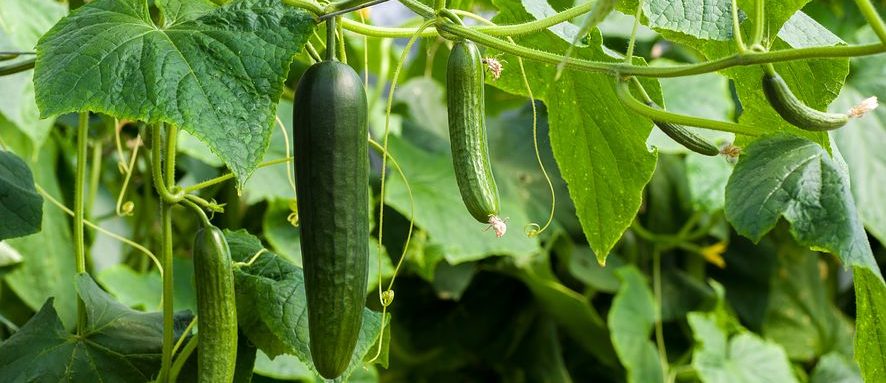Mankind has been enjoying cucumbers for thousands of years, if not tens of thousands. Both the ancient Egyptians and the Greeks are known to have eaten a lot of this green vegetable, and of course, in England there is the good old fashioned cucumber sandwich that has been a part of our culture for such a long time.
This summer plant is one of the most popular to grow in the UK, only second behind tomatoes, and part of that popularity is because they are so easy to grow. They also produce cucumbers quite prolifically and don’t require you to mollycoddle them once established.
Germinating cucumber seeds inside, so that they can be transplanted outdoors, is a fairy straightforward process, as is planting them, but for the best possible results you should follow the information and tips found here on this page.
So read on to find out how to germinate, plant, and grow cucumber seeds into healthy, vegetable bearing plants.
How to germinate cucumber seeds
The fastest way to germinate cucumber seeds is to either place them directly in warm water and let them soak, or wrap them in a dry paper towel, soak the towel in warm water, and then put it inside a drinking glass before sealing the top with clingfilm.
Following either of these methods will result in a faster than normal germination of the cucumber seeds, and they should be ready to plant in paper cups/Styrofoam cups filled with potting mix within 3-4 days, and plant outside when the last frost has long gone.
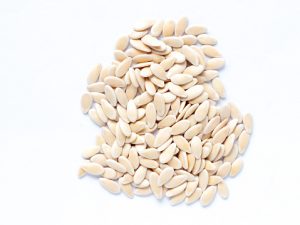
If you go with the paper towel and glass method, make sure you place the glass next to a window that gets a lot of sun, and then do the same with the Styrofoam cups too. Alternatively, you could take the slightly slower, more traditional route when it comes to indoor germination of cucumber seeds.
To do this, get some 3-inch diameter peat pots and fill them with a mix of perlite, vermiculite (1 part each), 2 parts of compost and sphagnum peat (4 parts). Some people also add lime if the pH balance of this germination mix isn’t at the desired level of 6. You could also just buy some seed starting mix from your local garden centre or order from Amazon.
Once the peat pots are filled with the mix, you should make 3 holes half an inch deep and then plant the seeds in them.
Next, add moisture to the mix, but be careful not to overwater and keep an eye on it in case it starts to look dry. In which case you need to add moisture again. Wrapping the top of the peat pots with clingfilm can help to keep moisture where you want it too.
You should check with a thermometer regularly to see that the germination mix isn’t getting colder than 70 degrees Fahrenheit or hotter than 85.
Once the outside soil and weather have warmed up, you can transfer the seedlings to the soil in the garden.
Planting and germinating cucumber seeds directly in soil
As always, proper soil prep is the key to success when it comes to growing cucumbers. Mix some compost and/or aged manure in with the soil, and it wouldn’t hurt to add some organic fertiliser in there either.
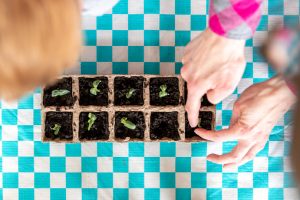
The best time to plant cucumber seeds is to wait until 2-3 weeks after the last spring frost. This is when the soil should be warm enough to enable your cucumber plants to grow to their full potential. A minimum soil temperature of 60 degrees is essential or the seeds will not germinate.
Air temperature is also important, and cucumbers seeds will struggle if the air is colder than 65F. Higher temperatures getting up towards 90 degrees are much better for these plants and will cause the seeds to germinate much faster.
In your pre-prepped soil, you should plant your cucumber seeds about half an inch to one inch deep and space them around an inch apart.
The place you plant the seeds should be in full sun for most of the day, but a little shade will still be ok. Cucumbers crave heat and light. A grow tent can be a real advantage.
Other planting:
How to Plant Sunflower Seeds
How and when to plant strawberries in the U.K
How to water tomato plants
How to Grow in the Greenhouse All Year Round
How to plant onions
Growing cucumbers
Cucumbers aren’t the hardest things to take care of. As long as they are getting plenty of heat from the sun, the only other thing you really need to worry about is making sure the plant gets at least an inch of water once per week, or better still: a drip irrigation system, and some organic fertiliser once you start seeing the plant bear fruit.
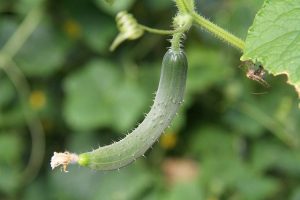
If you are going to grow a vined variety of cucumber, you really need to set up a trellis of some kind to keep them off the floor and growing well.
Cucumbers are usually ready for harvesting after 50-70 days. Then all you need to do is cut them off the vine with a good pair of pruners and prepare and eat them how you like. If you are not planning on eating them right away, you should leave a little bit of stem attached to the cucumber so this will delay rotting once removed from the vine.
Keep an eye out for a few pests such as aphids and cucumber beetles. If aphids become a problem, you can read our article on how to get rid of them here.
Cucumber beetles can spread bacterial wilt to your plants and if they get infected, you will have to remove and destroy them.
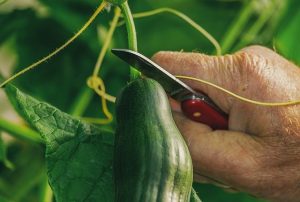
Always make sure you get rid of weeds growing around your cucumber plants, and also dead leaves and other debris which can prevent air circulation. Poor circulation can lead to powdery mildew, which is definitely not something you want.
Some varieties of cucumber are more resistant to these problems, so you might want to look into that before deciding on which one to plant in your garden.
